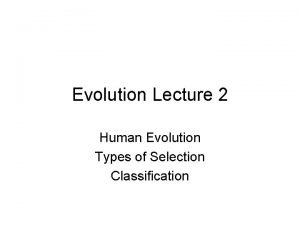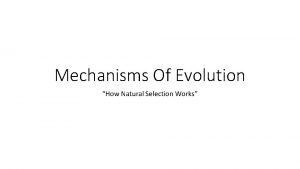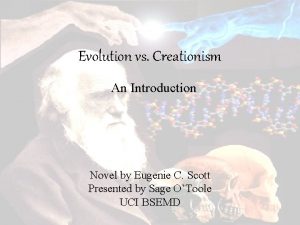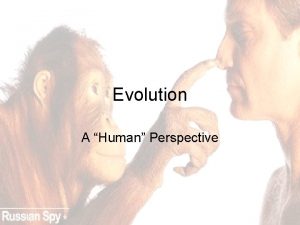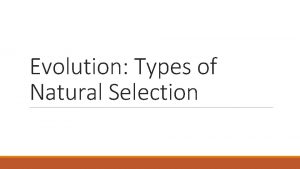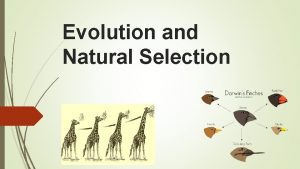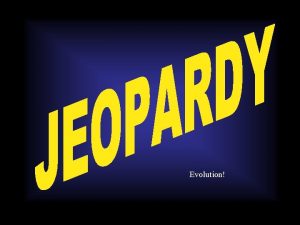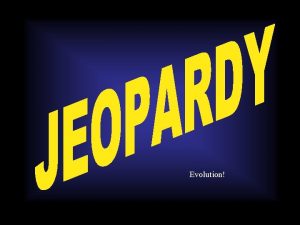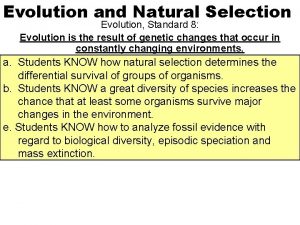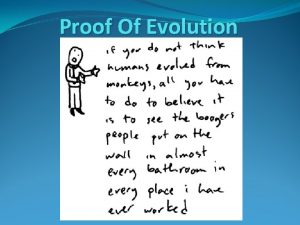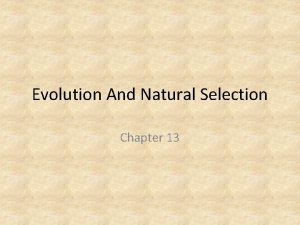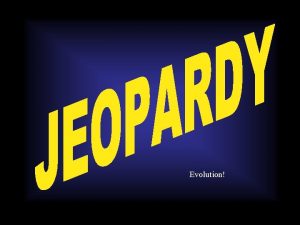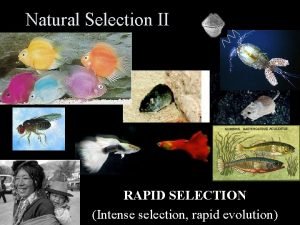Evolution Lecture 2 Human Evolution Types of Selection

















- Slides: 17

Evolution Lecture 2 Human Evolution Types of Selection Classification

Types of Primates

10 Features of Primates 1. Five Grasping Digits 2. Fingernails and Toenails 3. Fingertips 4. Ball and Socket Joints 5. Stereoscopic Vision 6. Small Nose 7. Omnivorous 8. K-Strategist 9. Large Brain 10. Social Group

Distinctions Between Humans and Apes


Trends in Hominid and Human Fossils

• • Uncertainties about Human Evolution Many gaps and questions in human evolution timelines Fossil record is incomplete – most bodies are decomposed and don’t leave behind a fossil or fossils degenerate over time – as a result, difficult to determine how different species of hominid are related Most hominid fossils are limited to bones and teeth Difficult to estimate cranial sizes because of differences between males, females and juveniles

In the evolution of hominids, there is a general trend showing an increase in cranial capacity

Humans have undergone Genetic and Cultural Evolution • Genetic evolution – deals with inherited characteristics: o o o Physical characteristics (brain size, bipedalism) Number of chromosomes Particularities of biochemicals such as blood proteins • Cultural evolution – deals with acquired knowledge that can be passed within a social group and through generations: o o Language (spoken and written) Customs and rituals (burying the dead) Art Technology (obtaining food, warfare)

Human Classification • Animalia = Eukaryotic, Multicellular, Motile • Chordata = Vertebral column • Mammalia = Mammary glands, sweat glands, hair • Primate = Opposable thumbs, stereoscopic vision • Hominidae = Bipedal, large brain • Homo = Flat face, small teeth and jaw • Sapiens = Language, complex tools

Types of Selection

Stabilizing Selection Curves

Theories of Evolution - Corollaries • Random genetic drift is the loss of alleles from a population's gene pool through chance. • Mutation introduces genetic variation into a breeding population. • Gene flow occurs through interbreeding: the transmission of genetic material from one population to another. Gene flow decreases differences and inhibits speciation, the formation of new species.


Homologous Structures

Vestigial Structures

Classification • http: //www. ib. bioninja. com. au/standardlevel/topic-5 -ecology-and-evoluti/55 classification. html
 Types of natural selection in evolution
Types of natural selection in evolution Types of natural selection
Types of natural selection 01:640:244 lecture notes - lecture 15: plat, idah, farad
01:640:244 lecture notes - lecture 15: plat, idah, farad Balancing selection vs stabilizing selection
Balancing selection vs stabilizing selection Artificial selection vs natural selection
Artificial selection vs natural selection K selected
K selected Natural selection vs artificial selection
Natural selection vs artificial selection Artificial selection vs natural selection
Artificial selection vs natural selection Disruptive selection example
Disruptive selection example Clumped dispersion
Clumped dispersion Natural selection vs artificial selection
Natural selection vs artificial selection Two way selection and multiway selection
Two way selection and multiway selection Multiway selection
Multiway selection Mass selection and pure line selection
Mass selection and pure line selection Natural selection vs evolution
Natural selection vs evolution Natural selection vs evolution
Natural selection vs evolution Natural selection definition
Natural selection definition Management fifteenth edition
Management fifteenth edition

